Up Next

Formula 1 is back at Zandvoort for the first time in 36 years for the Dutch Grand Prix and Friday gave a tantalising glimpse at the lively – if potentially chaotic – weekend that is to come.
A race revived exclusively for the purpose of tapping into the fevered support of Max Verstappen was always bound to generate a party atmosphere even in times of COVID-19, while the fiendish and old-school Zandvoort track ensured a unique on-track challenge too.
So how much have we learned about the Dutch GP already? Plenty, it turns out. Even if the performance pecking is not among them.
CONSTANT DISRUPTIONS
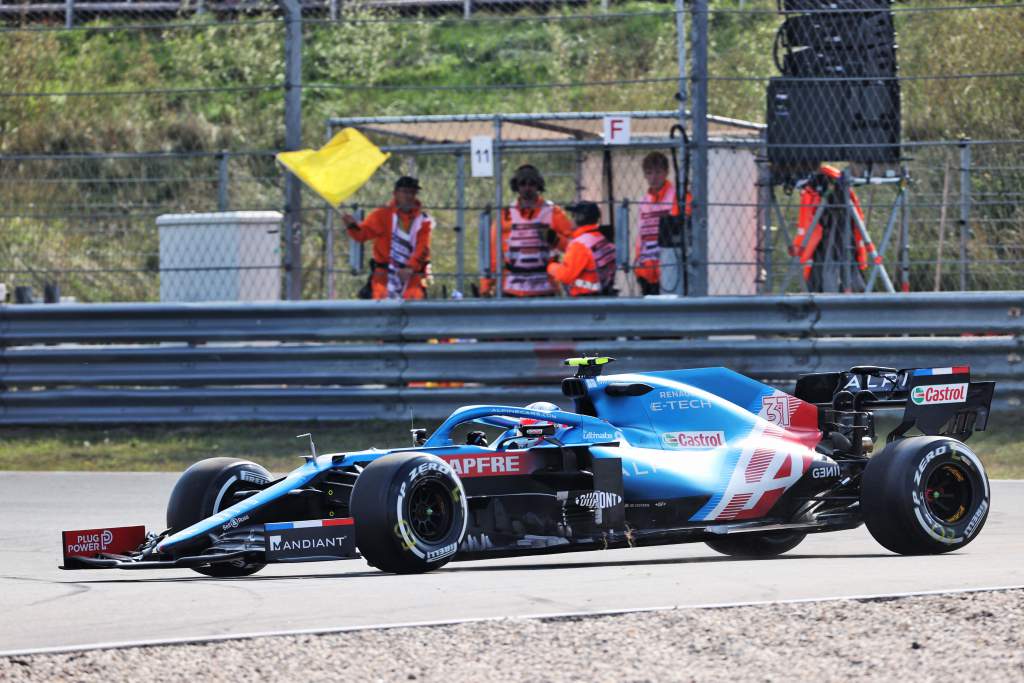
Whether it was for cars stopped on-track, beached in the gravel, or bringing stones onto the circuit, Friday’s running in F1 and the support categories was heavily disrupted by repeated red flags.
Cars can break down or spin off at any track so this element isn’t anything new. But Zandvoort is a particularly punishing circuit. The margin for error is minimal so that immediately heightens the risk of an incident occuring.
In addition the prominence of the gravel traps, especially at the devilishly tricky Turn 11 chicane, makes it very easier for cars to bring gravel back onto the track, which necessitates a clean-up operation.
And while there are some helpful parts of the track to park, even Hamilton stopping his Mercedes right by a gap in the fence wasn’t enough to avoid a red flag being thrown.
No chances are being taken around this track and that means the errors that could come in qualifying will almost certainly lead to serious session disruption.
MINIMAL RUNNING AND HAMILTON ON THE BACK FOOT
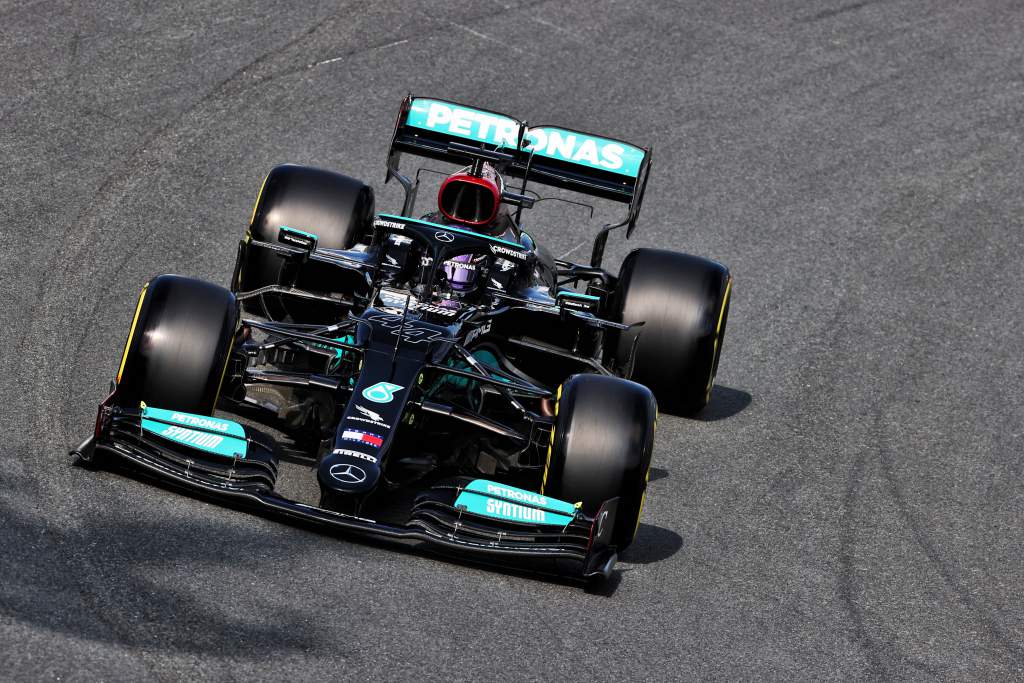
Of course, the more disruptions there have been, the less track running drivers have had.
That means less practice before qualifying, which further increases the risk of errors while on the limit. But it also means Lewis Hamilton heads into Saturday seriously on the back foot.
There is always an added urgency to learn the track and gather data when F1 visits a new venue and the circuit was very busy during the spells of green-flag running that were possible.
But the lengthy red-flag delay in FP1 sparked by Vettel’s stoppage seriously hurt teams and kept mileage at a minimum.
So Hamilton’s early problem in FP2, when he had to stop and miss almost the entire session, means he has a lot of catching up to do in final practice and will inevitably be underprepared going into qualifying at a track where overtaking will be really difficult.
“The main issue for me is just catching up,” Hamilton admitted.
“But Valtteri does a fantastic job and we’re not too far off on set-up most of the time so hopefully the great work he’s done today helps.”
ENOUGH OF A CLUE ABOUT VERSTAPPEN
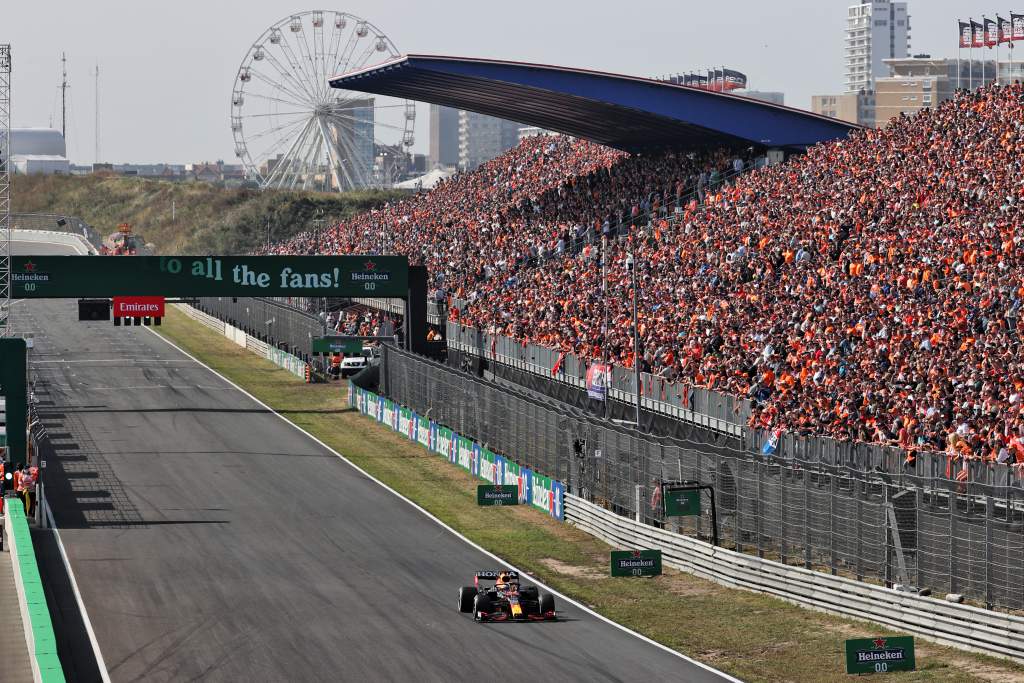
What we have seen from the interrupted practice running on the first day is that Max Verstappen looks almost as much a favourite in terms of pace as he is with the home crowd.
We didn’t have a direct comparison with Hamilton to make because of the latter’s stoppage this afternoon, but Verstappen was carrying a good half-second advantage over Valtteri Bottas’ Merc in the long runs.
Admittedly, some of that is probably due to a low engine setting from Mercedes, as it was losing 0.3s in the first sector, which is the most power-dominated one.
Forget the headline times as Verstappen’s best laps were spoilt by traffic and a red flag respectively.
“We didn’t get that first lap so we’re not quite sure what our ultimate pace is, but we’ve got a few issues to deal with,” said Red Bull boss Christian Horner of how Friday went for Verstappen and Sergio Perez.
“The car was a lot happier on the long run, Max was putting in some good times. Sergio’s pace improved quite significantly as well, so I think we’ve just got a bit of tidying up to do for the single lap, but of course, you’ve got to get a clean lap.”
Verstappen just seemed so tuned into the place, his handling of the Red Bull looking even more aggressive than usual – and something which appears to be leaving team-mate Perez even more breathless than usual by comparison.
Mercedes may yet have more in its arsenal to pull out which we may see tomorrow but initial running is making it look like the orange army could get their dream result.
TRAFFIC SHENANIGANS INEVITABLE
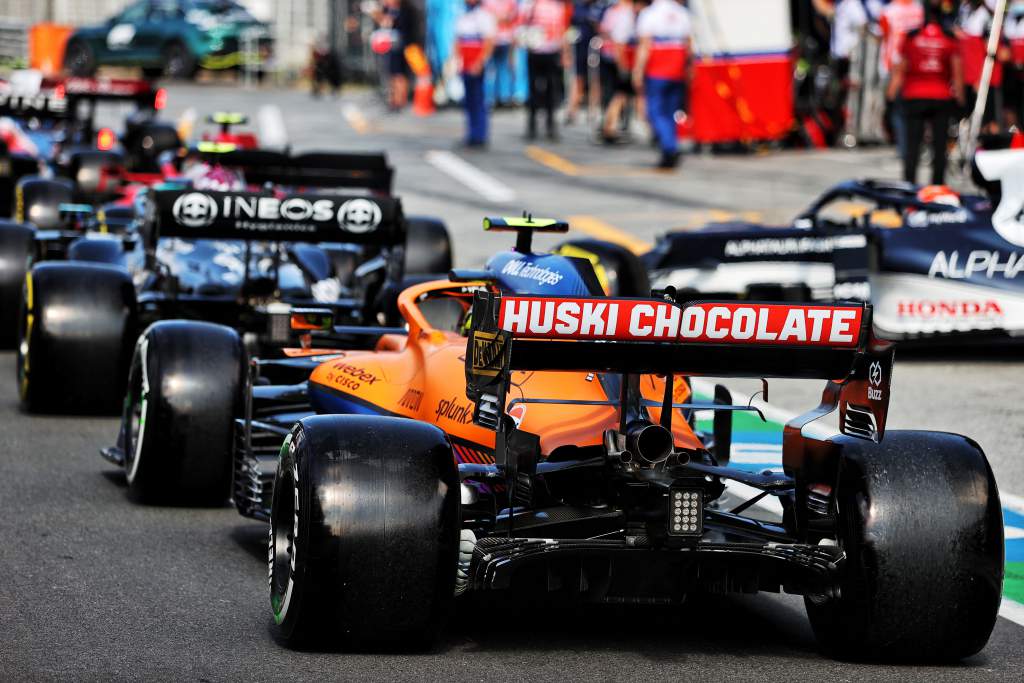
At 4.259km, Zandvoort is the shortest track of the calendar so far after Monaco. It pips the Red Bull Ring and the Hungaroring for the honour of being the shortest permanent venue.
That inevitably means crowding when all cars are on track and we’ve already had plenty of warnings that Q1 will be particularly difficult.
Like with all circuits that present such an extreme, the issue of finding space will lead to plenty of backing up at the end of out-laps but there will also be a constant threat of encountering slow cars while on a flying lap.
“I just can’t get a lap, man,” lamented Verstappen at one point during FP2.
In first practice we saw some shenanigans into Turn 1 with Valtteri Bottas and Pierre Gasly racing to get their final runs in as the flag fell. Esteban Ocon got a warning for moving across and forcing Lando Norris off-track at the end of an out-lap.
We can expect much more of this on Saturday.
THE BANKING IS SPECTACULAR
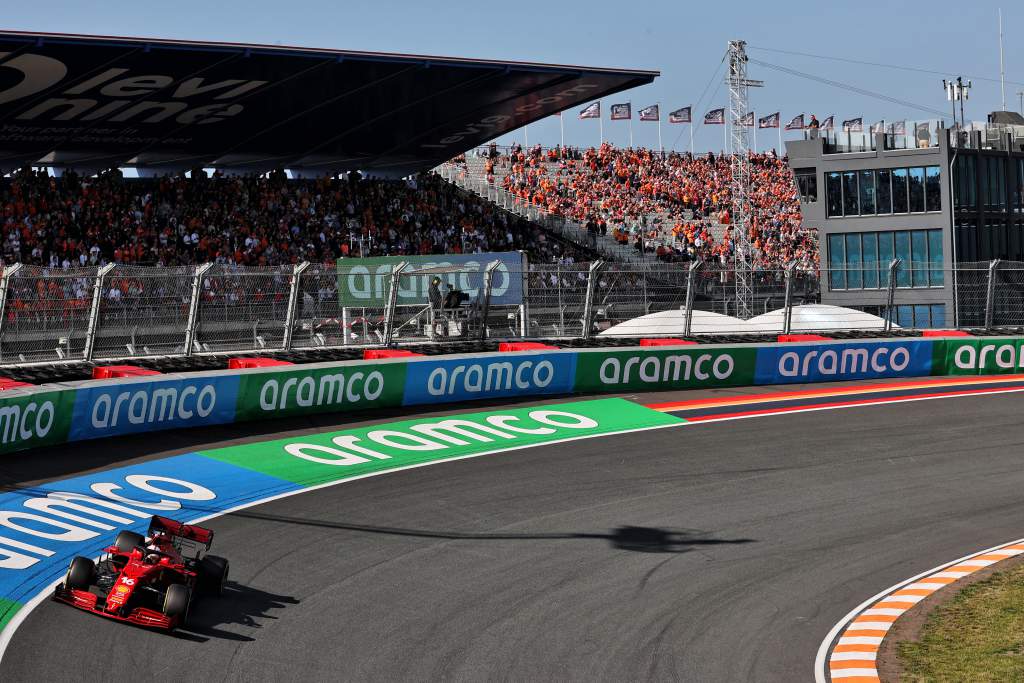
While the final corner banking is relatively sedate, given it’s an easy flat-out blast, Turn 3 is a very different story. Peaking at 19 degrees of inclination, F1 cars haven’t had to deal with anything like it for decades.
It’s spectacular for so many reasons. Watching from trackside at the start of FP2, it was astonishing how much speed drivers could successfully carry in. The first time Verstappen, the most aggressive of all the drivers in terms of entry, came in it seemed certain he’d hit the wall – only for the car to bite, rotate and send him on his way through the uphill exit.
There’s no corner anywhere on the F1 calendar that creates so much variety in terms of line and approach, with the geometric line useless thanks to the presence of the banking.
Note to F1 track designers – more, please.
UNUSUAL CIRCUIT, NEW PROBLEMS?
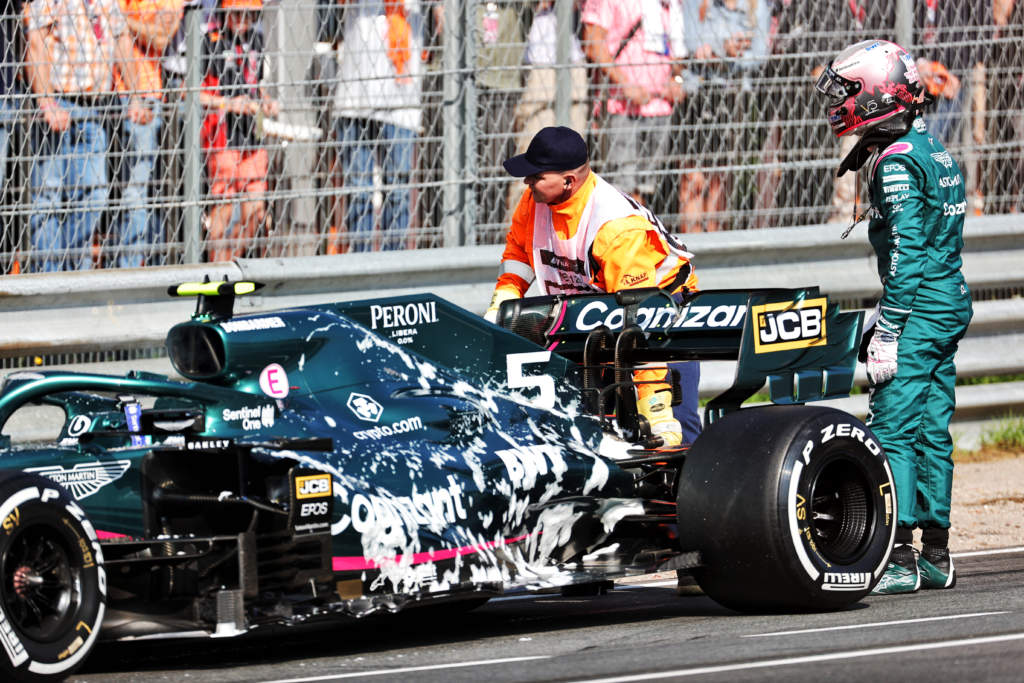
Both Aston Martin and Mercedes, who use the same power unit and oil tank, both suffered failures today. Vettel’s was fairly dramatic and Hamilton’s less so, but still oil pressure-related.
Both teams seemed to recognise their problem at the end of the lap, which is just after the highly-banked final corner.
The oil tanks could very easily be suffering from oil pick-up problems. Once these engines get a sniff of air instead of oil, their running time is limited. The Aston Martin guys and girls didn’t seem to notice it in time to save a blow-up, while the Mercedes guys and girls did – but probably not quick enough to save the engine – although the team has confirmed it was an old engine, specifically the one used at the start of the season.
The actual lateral force going around that banked corner is probably not any higher than, say, around Copse at Silverstone but the combination of that and the vertical force compressing the car into the ground makes it all very different as far as picking the oil up.
I don’t know the internal design of the tank, but I’m pretty sure it will be getting a fair amount of attention tonight. Will they be able to rectify it, or will it be as simple as running a higher level of oil?
We probably won’t know the answer to that until late in the race on Sunday when the engine has used a bit of oil.
As I [Gary Anderson] know only too well from Spa 30 years ago when we were running second with Andrea de Cesaris in his Jordan with a genuine chance of winning the race and it all went bang late on.
THE ORANGE ARMY IS OUT IN FORCE
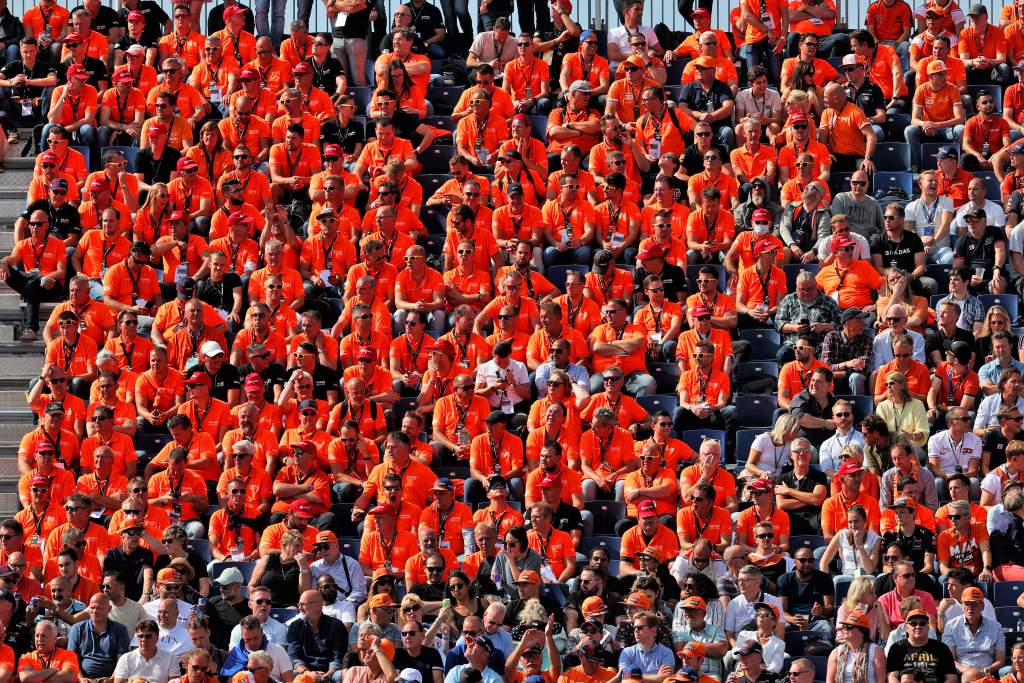
Even on Thursday, the circuit seemed to be swarming with Dutch fans eager to catch a glimpse of their hero. So it’s no surprise that come the on-track action starting on Friday, they were out in force.
Heading out to watch trackside during free practice two and the atmosphere was that of qualifying, or perhaps even the moments before the race, with the orange army chanting and cheering in anticipation of seeing their hero on track. And, of course, they cheered when his arch-rival Hamilton stopped on track during FP2.
Even with the capacity limited to two-thirds of the maximum capacity because of concerns about COVID-19, this was an atmosphere worthy of any of the great circuits around the world.
OVERTAKING IS GOING TO BE LIMITED
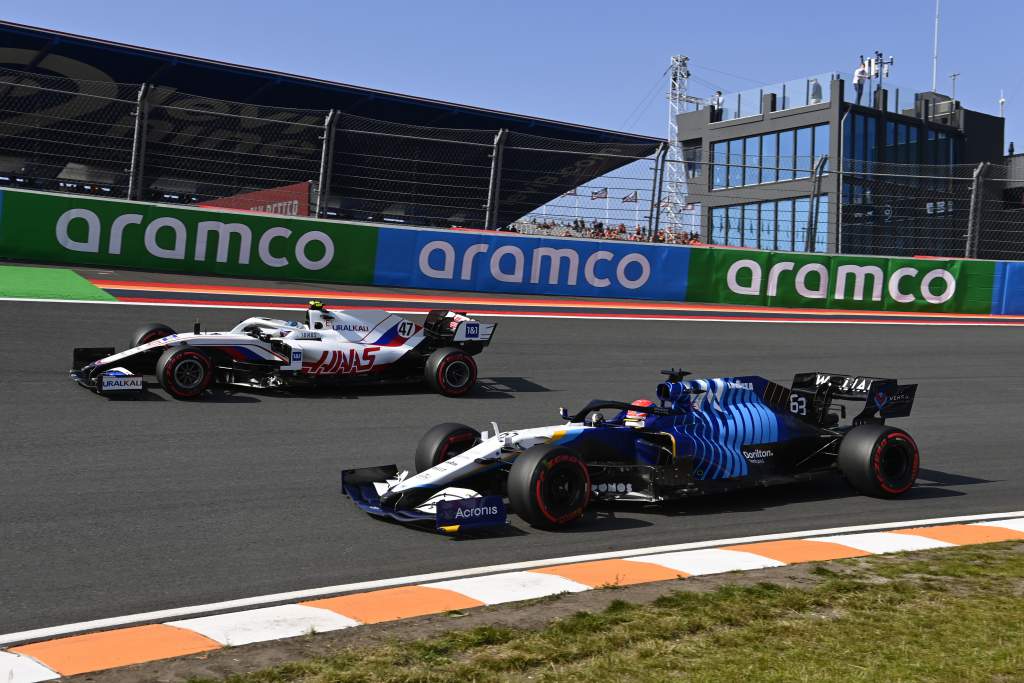
Unsurprisingly the circuit is a huge triumph in the eyes of the drivers. Hamilton called it “crazy” in an F1 car and “a real racing circuit”, Pierre Gasly felt like he was riding a “toboggan” through Turn 3, and Mick Schumacher called it a “rollercoaster”.
The thrill may only last until the end of qualifying. For the fast and narrow layout that is so enjoyable over one lap does not lend itself to overtaking.
As we saw during the two practice sessions, even making moves on the straights caused problems – as Ocon discovered when he tried to get out of the way of Verstappen only to force Norris off the track.
The banking in the final corner was added to the circuit in the hope of making the DRS useable through it, effectively extending the final straight. But drivers felt that even had the DRS been available, passing into Turn 1 would only be possible with a huge performance differential.
This was showcased during FP1 with Bottas and Gasly going wheel to wheel into Turn 1 with Gasly getting ahead on the inside but only just getting the car stopped.
Given Bottas was having to co-operate, which drivers won’t be in the race, only a move up the inside when you are already side-by-side will be possible.
It’s also a difficult circuit to follow on given it’s such a high-speed track, so the race is not going to feature many passes. But if there are any, they are likely to be very special.






